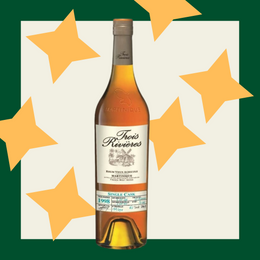
We said it in a previous article , the upcoming whites from this micro-distillery will undoubtedly be very interesting to follow (like the old ones that will follow), since they are produced on site and synonymous with singularity and their own identity. The bet is adventurous and audacious, which was sorely lacking in the first releases since they were rums selected from fellow rum producers and therefore of lesser interest. We will not return in detail to the hazardous and sometimes strangely misleading communication (no, the use of a Charentais-type still is not a first in Martinique and no, it is not the first organic rum either, as was - unfortunately - heard very recently at the Rhum Fest), A1710 even going so far, after the fact, as to give the definition of the word Extraordinary to 'better' make themselves understood, thereby giving a French lesson to anyone who had clumsily understood their words. Noted.
Let's quote a few synonyms, just for fun, and the complexity of the French language (and marketing?) requires it: supernatural, fantastic, eccentric, extravagant, which goes far beyond the average level, which is above. Finally, in the theater, "we play at the extraordinary" : we double, by way of exception, the price of seats. Any resemblance to an existing rum and its price would be purely coincidental.
Process-wise, while perhaps waiting to learn new things, it's extremely interesting on paper:
Slow fermentation, use of "unique" yeasts (we'll avoid giving you the definition) and distillation in a hybrid Charentais-type still (coupled with a 7-plate copper column). Nothing new under the sun but a specification that will at best make any amateur's mouth water. The first white to be released is called La Perle and has an alcohol content of 54.5°. Another white, this time called ' Renaissance ', is awaited (originally planned for December 2016) and will normally be offered in a pearl-shaped carafe (different fermentation yeasts and reductions announced). But today, let's move on to the first white, La Perle, an extraordinary white peasant rum with 1 star.

----------------------------------------------------------------------------------------------

A1710 La Perle / 54,5°
Bottle #23 (from Baba), La Perle white rum 2016 batch 1 at 54.5° (measured at 55.35°).
This first vintage is made up of 'Canne Roseau' and 'Canne Bleue' grown near the distillery and cut by hand. Fermentation will take place over 5 days with a mixture of indigenous yeasts (naturally present on the cane) and baker's yeasts; the cane wine has an alcohol content of around 6% and will pass through their still to come out at around 68%. After a reduction of just over 2 months to bring the distillate down to 54.5%, the rum is bottled without filtration.
The dress, crystalline and fleshy, lets escape a crown of regular pearls in a slow and tasty ballet.
The nose is powerful and offers a beautiful richness without any fire and with fairly well-integrated alcohol. The cane is delicious and wildly fresh, reminiscent of a kind of cane velouté, ripened to perfection and in which artichoke hearts and asparagus have been mixed; a floral touch gives the rum a seductive side and the reminiscences of an apple orchard even give it the allure of a diva; after a few minutes heavier and vegetal aromas arrive, where the reed, steamed vegetables and fiber replace the juice and sugar, in a changing, capricious and confusing crisscross until it becomes mineralized in a more frank and almost cold nose, metallic and acidic/sour (the apple has long since ripened and passed to the next stage, taking up all the space).
Rest brings more change with a more earthy, almost farmy side with strange and sometimes disturbing flights, as if oxidation literally broke the nascent seductive atmosphere, transforming a graceful beginning into a shady finish. More briny and even iodized, still in an oxidized atmosphere, the nose oscillates too much to establish the long-awaited balance; the profile even gets a little closer to a fruit brandy (pear, granny apple). In a crazy atmosphere, the nose starts off very well but does not find stability and seems to fade as the wait, the rest and the oxidation progress, fatal, sending the imagination of the cane field far enough away to completely forget it. It thus goes in a few minutes from a sweet smell of cane juice pressed in the field, to smells of auction; the proximity of the sea, no doubt.
On the palate, the attack is striking, powerful and relatively hard: the minerality carries everything and the alcohol is very present. As much as this alcohol was well melted on the nose, it is whole in the mouth and burns here and there, in an unbalanced mouth. Fresh grass (and bitter), minerality, metallic aromas (stainless steel, aluminum?) and acids (oxidation?); in this landscape, it is not easy for anything else to stand out, especially not the fruits, even if a slight sweetness rounds off the edges a little. Contrary and monolithic, the rum burns on the palate, very far from the promising beginnings and the seduction that took place at the very beginning of the tasting. Distillation error, or the desire to stand out from the competition? We sense potential but the mouth appears far too alcoholic and oxidized, and the finish unfortunately does not improve anything, mainly on the acidity and alcohol, resolutely dry and bitter, leaving a very present metallic taste in the mouth which will remain for a long time.
There is surely a huge potential with such fresh cane and such a distillation arsenal and we will wait impatiently (admittedly in the doldrums) for batch 2, but this first attempt is very disappointing. In the same idea of slow fermentation and discontinuous distillation, we can only recommend Rhum Rhum (Marie-Galante) or Issan or Chalong Bay which offer much more complete and balanced products (and close to sugar cane).
And to avoid being left with a negative preconception, we warmly invite you to read the feedback from Damien Sagnier on the Rhum Club Francophone website , and that of Cyrille Mald on RumPorter (who was much more patient in leaving the rum for 6 weeks, and that is to his credit).
To help you (and me) find your way around, regarding the notes:
90 and + : exceptional and unique rum, it is the best of the best
between 85 and 89 : highly recommended rum, with that little something that makes the difference
between 80 and 84 : recommendable rum
75-79 POINTS : above average
70-74 POINTS : in the low average
less than 70 : not very good
Review courtesy of DuRhum.com.
From the folks behind DuRhum, Velier, and more, comes a premium online marketplace for rum enthusiasts by rum enthusiasts! Do check out www.rowspirits.fr for more great content and iconic rums!








